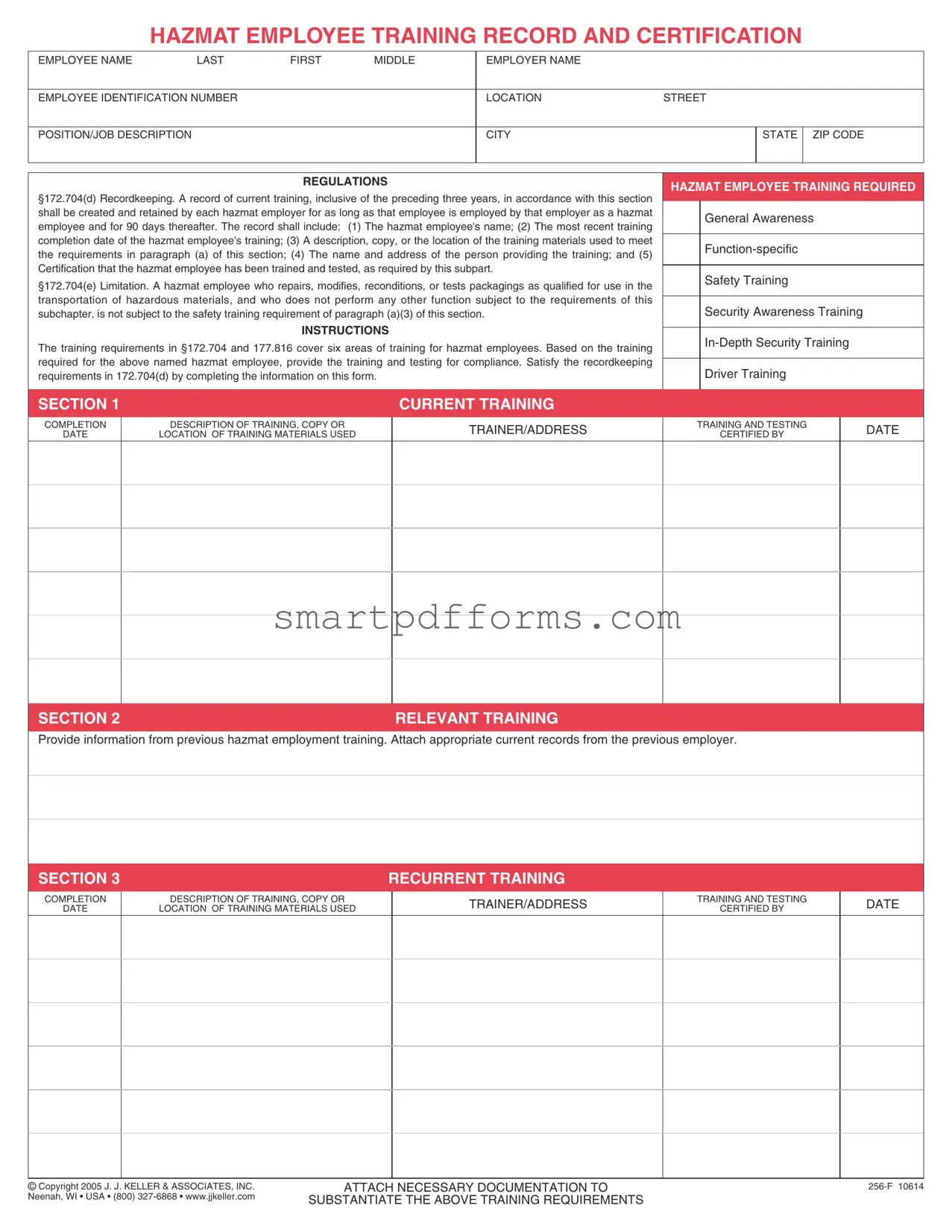What is the Hazmat Employee Training Record form used for?
This form is designed to document and certify the training of employees who handle hazardous materials (hazmat) within an organization. It serves to compile a record of current training, which also includes information from the preceding three years, as required under regulations. Such documentation is necessary for compliance with federal laws related to the safe handling, transportation, and security of hazardous materials.
Who needs to complete the Hazmat Employee Training Record?
Every hazmat employer is required to complete and retain this record for each of their employees involved in the handling of hazardous materials. This includes employees engaged in packing, unpacking, transporting, manufacturing, or any other function that involves hazmat.
What information must be included in the Training Record?
- Employee’s full name
- Most recent training completion date
- A description, copy, or the location of the training materials
- Name and address of the training provider
- Certification of the employee’s training and testing
How long must the Training Record be retained?
The record must be kept for as long as an individual is employed in a hazmat-related position and for 90 days following their departure from the company. This ensures that the record is available for review by regulatory authorities or for internal audits.
Are there exceptions to who requires safety training documentation?
Yes, employees who repair, modify, recondition, or test packagings for hazmat use, and do not perform any other hazmat-related functions, are not subject to the safety training documentation requirement as outlined. However, it’s essential to understand the specific roles of employees to accurately determine exemptions.
What are the six areas of training covered by the regulations?
- General Awareness
- Function-specific Training
- Safety Training
- Security Awareness Training
- In-Depth Security Training
- Driver Training (for transporting hazardous materials)
How should additional relevant training from previous employment be included?
Information regarding relevant hazmat training received from a previous employer should be gathered and attached to the form in Section 2. This ensures a comprehensive training record that encompasses all relevant past and current training experiences.
Where can additional documentation and details be found?
For further information or additional documentation requirements, employers and employees can consult the website of J.J. KELLER & ASSOCIATES, INC., or contact them directly via the provided contact information. It's a resource for staying compliant and understanding the depth of required training and recordkeeping.

